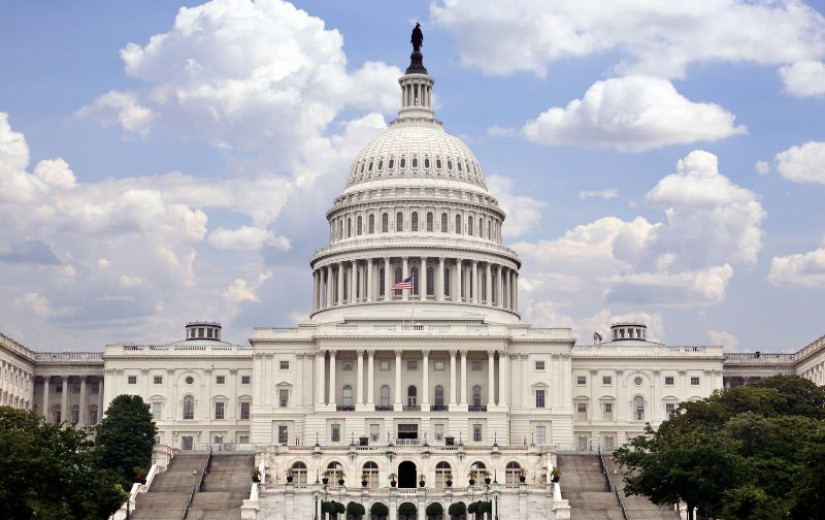
Hallowed is the name of Bell Labs. It falls from many an ambitious lip, seeking to conjure forth lost magic for their pet jar. Some zealots go further. They attempt the most venerated of summons — to materialize an Apollo.
The conjuring proceeds with hope. It is extremely exciting and hopeful to be a part of such an endeavor. Naked hope sparks the flame of conviction. Sponsors are found. Press releases are released. Social media is social-ed. Applications are announced... It's real!
And then there's silence. Louder the start; quieter the end. Many an aspiring titan ends up wandering the plains of human endeavor with an open jar; forever searching for magic to bottle.
Alexander Graham Bell was prolific. His interests spanned hydrofoils (see footage above), metal detectors, optical data transmission, aviation, genetics, acoustics and early electrification. Bell used his first big liquidity event to start Volta Laboratory and Bureau, a lab that Bell led with an enlightened management style that would become Bell Labs' signature. From "[Bell] suggested the basic lines of research, furnished the financial resources, and then allowed his associates to receive the credit for many of the inventions that resulted." 1
Mervin Kelly, the man who built Bell Labs, shared this attitude. Starting in the late 1920s and accelerating in the 1930s, Kelly went about scouting and (indiscriminately) assimilating every talented person he could find. From the Idea Factory,
It was curious, in a way, who they were, these men coming to Bell Labs in New York. Most [...had been flagged by professors...] and their names had been quietly passed along to Kelly or someone else at the Labs. [Typically, these recruits grew up] with a peculiar desire to know more about the stars or the telephone lines or (most often) the radio, and especially their makeshift home wireless sets. Almost all of them had put one together themselves, and in turn had discovered how sound could be pulled from the air.
— Gertner, Jon. The Idea Factory: Bell Labs and The Great Age of American Innovation. Penguin, 2012.
Bell Labs' antecedent was founded by a prolific maker and researcher, and it was led from the very start by makers and researchers. As a working scientist, Mervin Kelly understood the golden rule, "How do you manage genius? You don't." And it worked.
During WW2, Bell Labs reversed engineered and improved on the British Magnetron within 2 months. Helped create the "Bazooka." Built an electronic computer that semi-autonomously controlled anti-aircraft guns, invented an acoustic homing torpedo, proximity fuzes, echo-ranging SONAR, pulse code modulation, the first anti-aircraft missile (the Nike) and the klystron.
By all accounts, Kelly stayed true to his philosophy. None of these projects were micro-managed by Kelly. People did things because they wanted to do them. And they kept doing them after the war.
Bell Labs is the furnace wherein the American century was forged.
Bell Labs died when Ma Bell died, that's how the popular narrative goes. While this account is mostly true, it obscures a deeper truth — Bell Labs was a victim of the information age it helped create.
There have been non-profit and corporate giants with larger war chests than Ma Bell. AT&T started Bell Labs when its revenue was under $13 B (current USD). During the great depression, when Mervin Kelly laid the foundation for the lab, AT&T's revenue was $22 B (current USD).
Inflation adjusted, Google has made more than AT&T did at Bell Labs' start since 2006. Microsoft, 1996. Apple, 1992.
Each has invested in research. None have a Bell Labs.
Academia's worse. Scientists at the height of their careers spend more time writing grants than doing research. Between 1975 and 2005, the amount of time scientists at top tier universities spent on research declined by 20%. Time spent on paperwork increased by 100%. To quote the study, "experienced secular decline in research time, on the order of 10h per week." 2
Empirical measures are hard to find, but another study found that principal investigators in astronomy spend more than 110 hours per grant. Or, one month per grant. As grants have a 20% success rate, more successful investigators apply to two or more per year.
The game is far more brutal if you're young. A young scientist with their own lab who sets their own research direction is unheard of. When was the last time a 20-something ran a lab at a major university?
People who can survive this system aren't necessarily the same as people who can do great work. Most of the great names of the past would be considered unemployable today;
"It's difficult to imagine how I would ever have enough peace and quiet in the present sort of climate to do what I did in 1964... Today I wouldn't get an academic job. It's as simple as that. I don't think I would be regarded as productive enough."
— Peter Higgs
Higgs' statement gets to the heart of the problem, MBA culture,
We live in a metrics obsessed culture that is obsessed with narrowly defined productivity. There's too much focus on accountability and too little focus on creativity.
The reason why we don't have Bell Labs is because we're unwilling to do what it takes to create Bell Labs — giving smart people radical freedom and autonomy.
The freedom to waste time. The freedom to waste resources. And the autonomy to decide how.
"I've always pursued my interests without much regard for final value or value to the world. I've spent lots of time on totally useless things."
— Claude Shannon
I don't think I was ever motivated by the notion of winning prizes, although I have a couple of dozen of them in the other room. I was motivated more by curiosity. I was never motivated by the desire for money, financial gain. I wasn't trying to do something big so that I could get a bigger salary.
— Claude Shannon
On December 23rd 1947, when the transistor was demo-ed for the first time, Mervin Kelly wasn't invited. In fact, he didn't know what Bardeen and Brattain were doing. Why would he? They'd tell him when they were ready.
Kelly seems to have believed that the desire to impress your boss was a corrosive force, and so new discoveries and inventions were steadily percolated up to him and other leadership layer-by-layer one to two weeks at a time. From his perspective, it wasn't Kelly's job to micromanage people. Yes, they worked for him, but in his model, he wasn't their employer — he was their patron.
Reportedly, Kelly and others would hand people problems and then check in a few years later.3 Most founders and executives I know balk at this idea. After all, "what's stopping someone from just slacking off?" Kelly would contend that's the wrong question to ask. The right question is, "Why would you expect information theory from someone who needs a babysitter?"
As with many things, it – ultimately – comes down to taste. Bell Labs worked because Mervin Kelly had great taste in people and problems. He could identify who had that innate drive and thirst for more, and who didn't. From Richard Hamming's You and Your Research,
Now for the matter of drive. You observe that most great scientists have tremendous drive. I worked for 10 years with John Tukey at Bell Labs. He had tremendous drive. One day about 3 or 4 years after I joined, I discovered that John Tukey was slightly younger than I was. John was a genius and I clearly was not.
Well, I went storming into Bode's office and said, "How can anybody my age know as much as John Tukey does?" He leaned back in his chair, put his hands behind his head, grinned slightly, and said, "You would be surprised Hamming, how much you would know if you worked as hard as he did that many years." I simply slunk out of the office!
Bell Labs' pantheon was built on the backs of those who can't escape having dark nights of the soul. People who wake up in the middle of the night every night and ask "what am I doing with my life? I've accomplished nothing worthwhile.”4 People with an exotic mix of conscientiousness, high openness and highly-directional neuroticism. Kelly and Bob Taylor (PARC) were gifted at identifying such people, because (I suspect) they were such people.
Like seeks like.
Sadly, freedom and patience alone isn’t enough. The Bell Labs formula can be briefly described as,
Use good taste to find great, ambitious people.
Surround them with other great, ambitious people.
Hire smart, technical makers to be around them.
Cross-pollinate between the two groups as necessary.
Make sure people talk to each other every day.
Create a school so they teach one another.
Encourage everyone to study / improve.
Once the group is humming with activity and has a sense of self identity, the smart leader can then,
Use taste to curate problems for the researchers.
Give freedom to think — for years, if necessary. Trust the taste.
Make explicit hand-offs to the makers.
Once you have something that works from the makers; emphasize fast scaling and execution.
Scale outwards as necessary.
Proving and expanding on the above formula is left as an exercise to the reader.
One of the reasons why I love working at 1517 is because I believe the general partners (Danielle Strachman and Michael Gibson) do understand why Bell Labs worked. I see it in how they deal with me and the people around them. Danielle is a teacher first, and has the patience of one combined with the resources of a VC.
And while a VC fund is limited in what it can do in providing open-ended freedom. It can try to provide a meaningful simulacrum of that space and community, which is why I’m so excited about programs like 1517’s Flux that invests $100k in people, no questions asked and lets them explore for a few months without demanding KPIs or instantaneous progress.5
I am hopeful that – as more organizations try such approaches – the idea will spread and we’ll get to see another Bell Labs.











